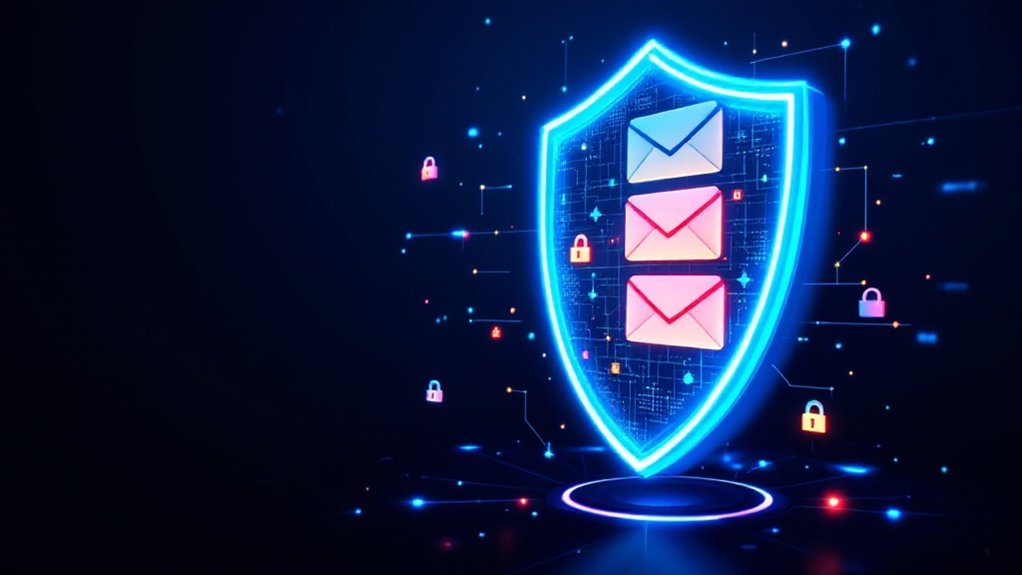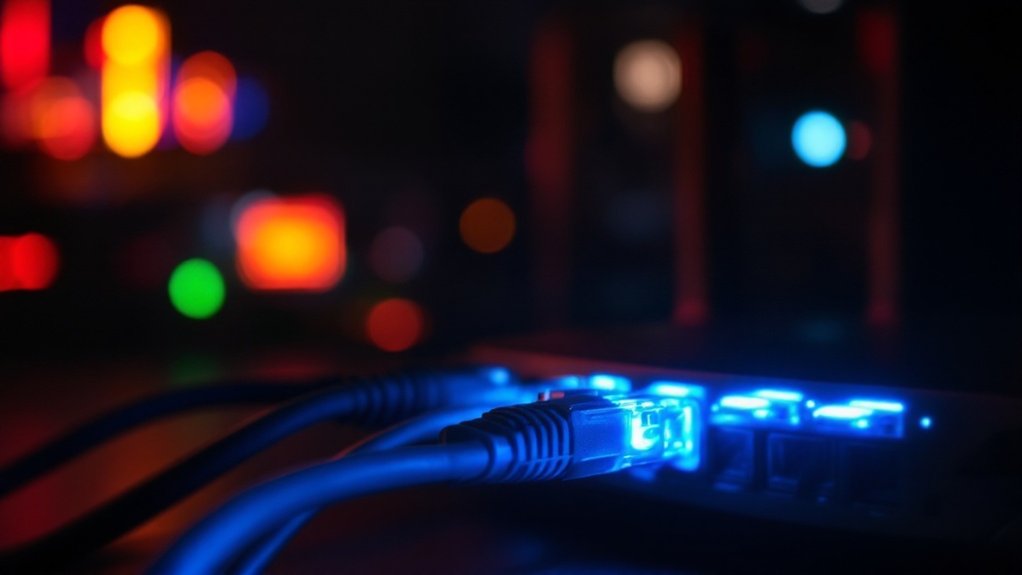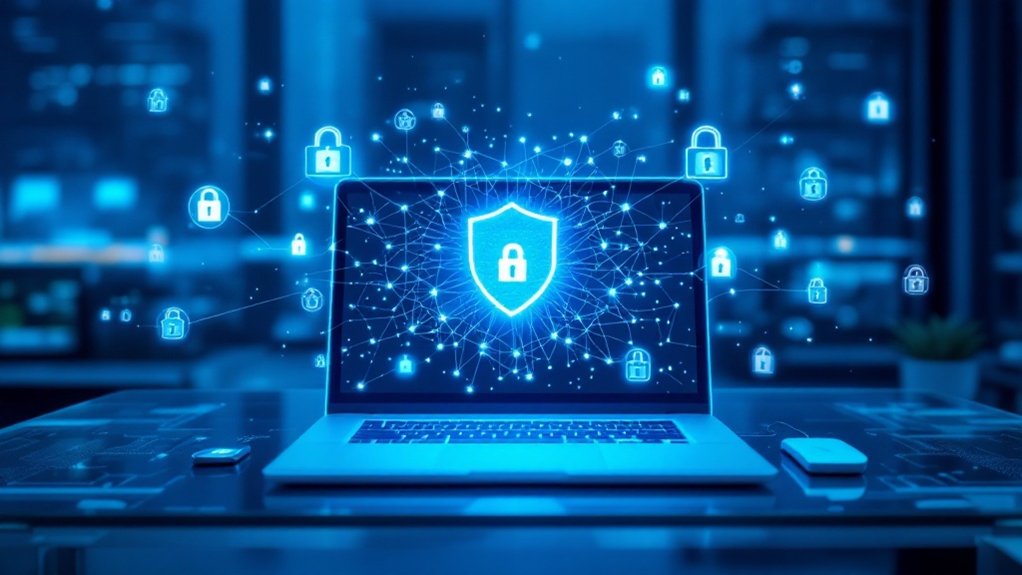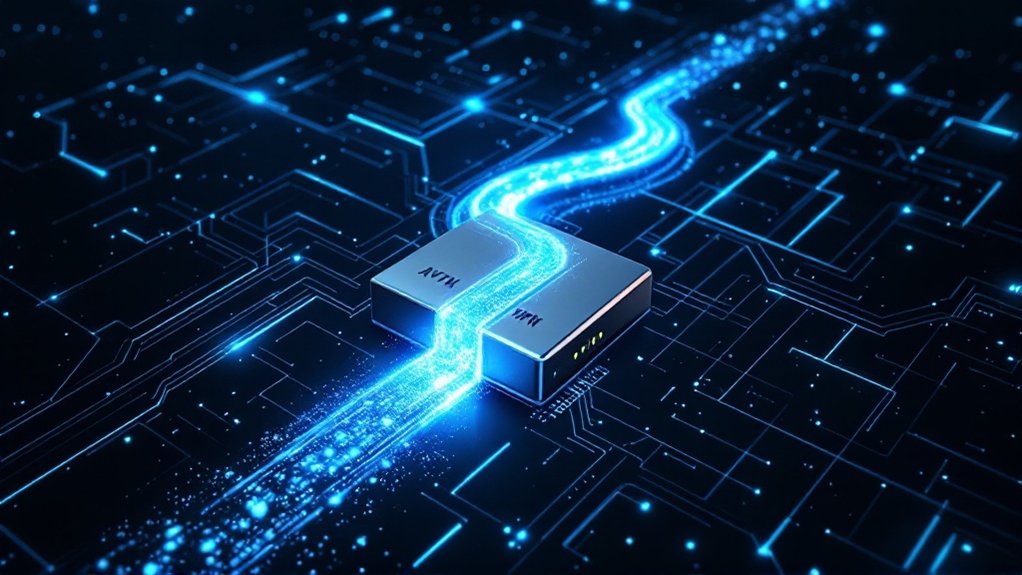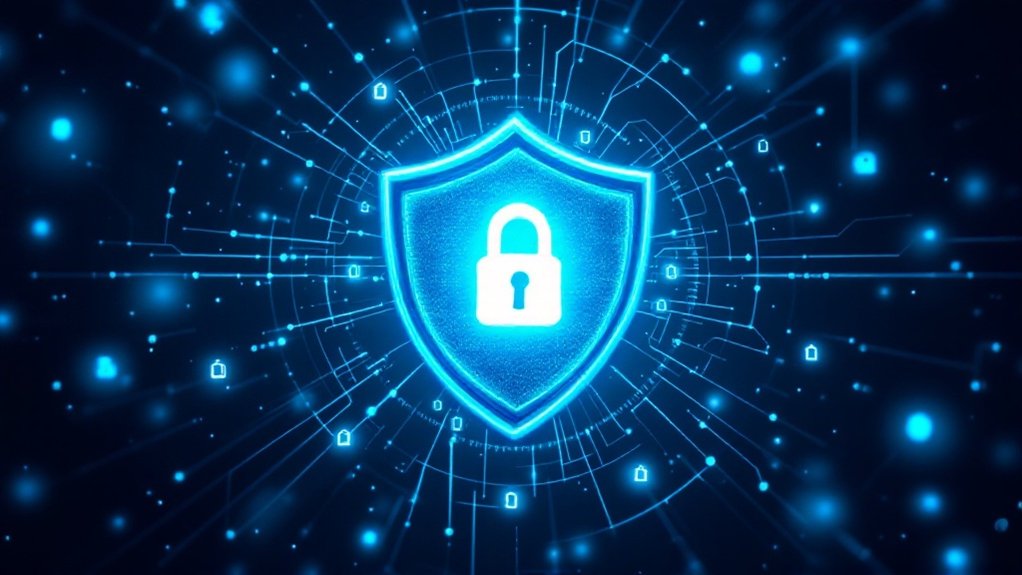Stopping email spoofing requires implementing multiple security layers, including vital email authentication protocols like SPF, DKIM, and DMARC. Organizations must deploy advanced filtering software with machine learning capabilities to detect and quarantine suspicious messages before they reach inboxes. Regular employee training focused on identifying spoofing indicators, combined with phishing simulation exercises, strengthens the human defense component. Visual authentication through BIMI logos helps recipients verify legitimate communications, as well as constant monitoring facilitates dynamic security adjustments. A thorough understanding of these protective measures provides the foundation for strong email security.

Email spoofing continues to pose a significant security threat to organizations worldwide, with cybercriminals increasingly exploiting vulnerabilities in email systems to impersonate legitimate senders and conduct fraudulent activities. Cyber-espionage operations frequently target high-ranking executives to gather sensitive corporate intelligence. To combat this growing threat, organizations are implementing extensive email authentication protocols that serve as the first line of defense.
These protocols include SPF (Sender Policy Framework), which verifies authorized mail servers, DKIM (DomainKeys Identified Mail) for ensuring email integrity during transit, and DMARC (Domain-based Message Authentication, Reporting, and Conformance) for establishing clear handling policies for suspicious messages. Implementing these protocols requires adding DNS TXT records to effectively authenticate emails.
Organizations are recognizing that technical solutions alone are insufficient without proper employee training and awareness. Regular cybersecurity training sessions have become vital, focusing on teaching staff to identify common spoofing indicators such as generic greetings, grammatical errors, and urgent requests for sensitive information. Similar to fake Geek Squad scams, employees must learn to recognize red flags in suspicious emails to prevent falling victim to fraud.
Many companies are now implementing phishing simulation exercises to test and reinforce employee vigilance, as they maintain up-to-date training materials that reflect evolving spoofing tactics.
Regular phishing simulations help organizations stay ahead of emerging email threats while keeping employees sharp and security-conscious.
Advanced email security solutions represent another key component in the fight against email spoofing. Modern filtering software, equipped with machine learning capabilities, can detect and quarantine suspicious emails before they reach employee inboxes.
These solutions analyze multiple factors, including email headers, content patterns, and sender behavior, to identify potential threats. Organizations are increasingly adopting multi-layered protection strategies that combine antivirus, anti-malware, and specialized anti-spoofing tools.
The implementation of Brand Indicators for Message Identification (BIMI) is gaining traction as an additional authentication measure, allowing organizations to display their brand logos alongside authenticated emails.
This visual confirmation helps recipients quickly identify legitimate communications from trusted senders. Regular monitoring of security logs and reports enables organizations to track attempted spoofing incidents and adjust their defensive strategies accordingly, creating a dynamic and responsive security posture against evolving email spoofing threats.
Frequently Asked Questions
Can Email Spoofing Affect My Personal Data if I Don’t Open the Email?
Email spoofing poses minimal risk to personal data when emails remain unopened, though some exposure can occur through automated processes.
As long as basic metadata and delivery confirmations may be collected by senders, the primary security concern emerges from tracking pixels if images auto-load.
Headers and routing information might be visible to email providers, but core personal data remains protected except if users interact with malicious content or click embedded links.
How Quickly Can Cybercriminals Create Convincing Spoofed Emails of Legitimate Companies?
Modern AI-powered tools empower cybercriminals to create convincing spoofed emails within minutes, representing an 856% increase in AI-assisted attacks over the past year.
These tools can generate multiple variations of phishing emails simultaneously, complete with authentic-looking logos, proper formatting, and error-free text.
Criminals utilize public information to craft personalized messages that mirror legitimate company communications, requiring minimal technical expertise to execute effectively.
Are Certain Email Providers More Vulnerable to Spoofing Attacks Than Others?
Research indicates significant variation in email provider vulnerability to spoofing attacks.
Alibaba Cloud, Office 365, and Yahoo demonstrate particular susceptibility to DKIM signature abuse, whereas Gmail and Outlook users face risks from forwarding-based spoofing affecting 1.9 billion accounts.
Testing of 30 major email services revealed universal vulnerability to specific attack types, with iCloud and Zohomail showing distinct security gaps in their authentication protocols and domain verification systems.
What Legal Actions Can Be Taken Against Identified Email Spoofers?
Legal recourse against email spoofers includes both criminal and civil actions.
Victims can file criminal complaints with local law enforcement and the FBI’s Internet Crime Complaint Center (IC3), as they pursue civil lawsuits for damages.
Corporate entities may issue cease and desist letters, file trademark infringement claims, or seek injunctive relief.
International cases often require coordination with INTERPOL and the utilization of mutual legal assistance treaties between jurisdictions.
Does Using a VPN Provide Additional Protection Against Email Spoofing Attempts?
During VPNs encrypt internet traffic and protect email communications during transmission, they offer limited defense against email spoofing in particular.
VPNs cannot prevent spoofed emails from reaching inboxes or stop attackers from impersonating legitimate senders. Their primary benefit lies in securing email data transfer, notably on public networks, but they should be used alongside dedicated anti-spoofing measures like SPF, DKIM, and DMARC for thorough protection.
